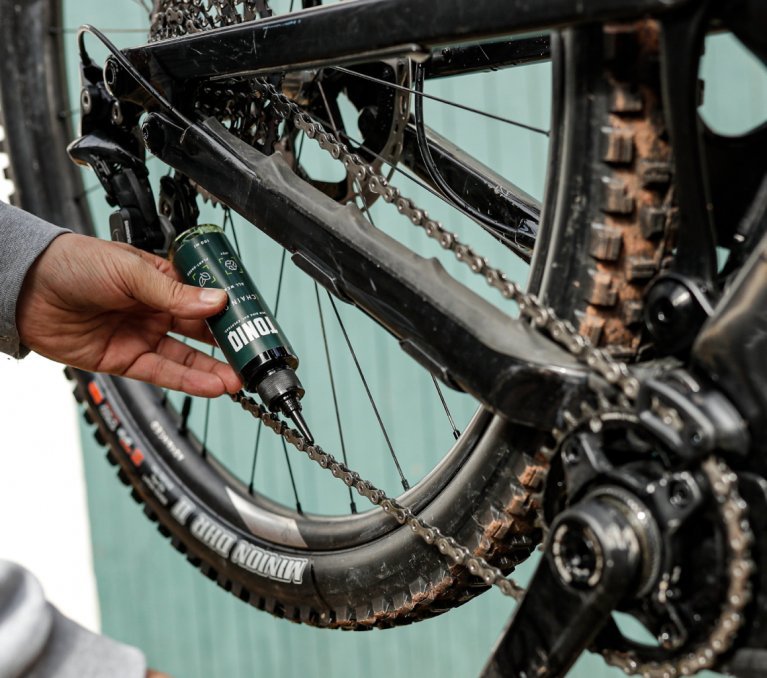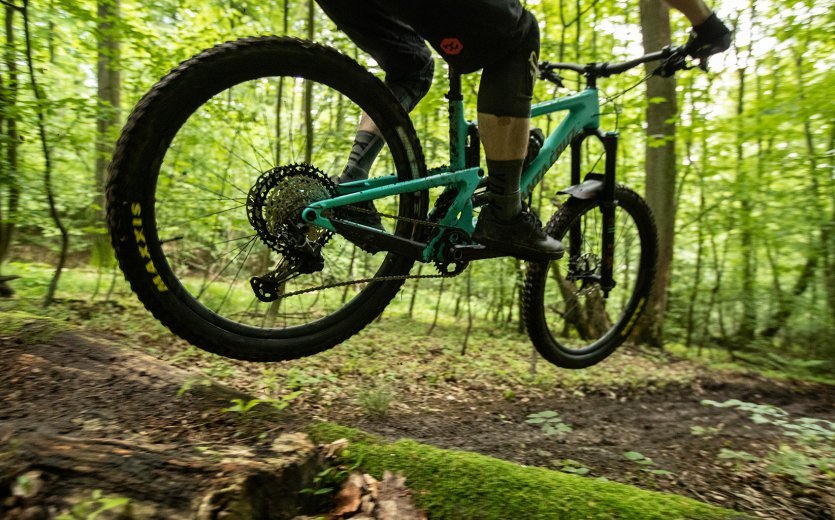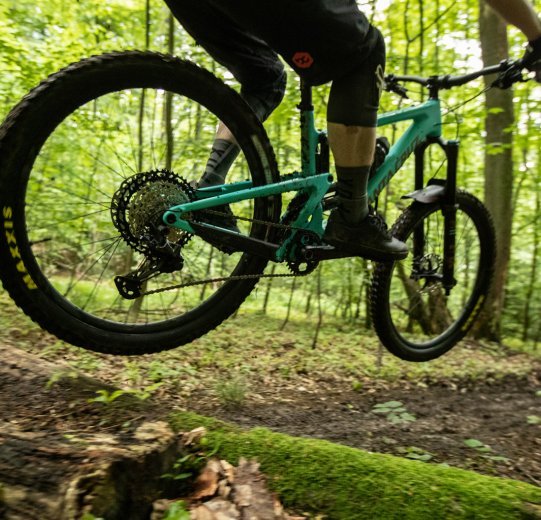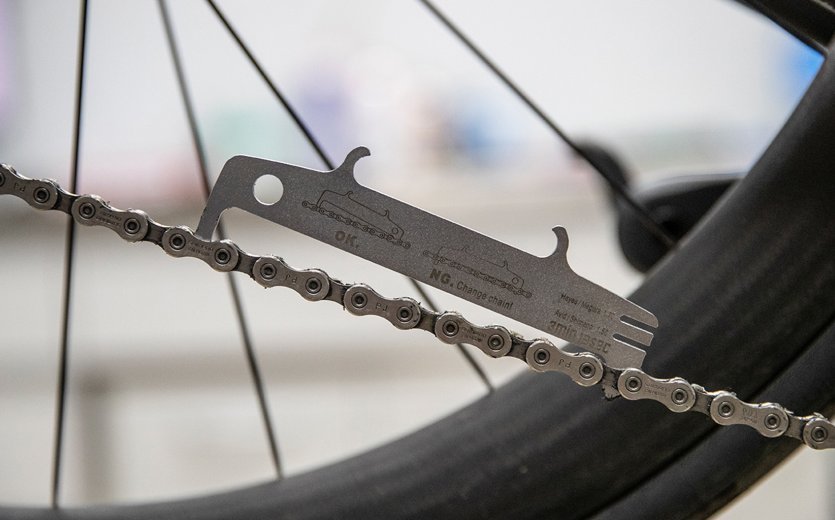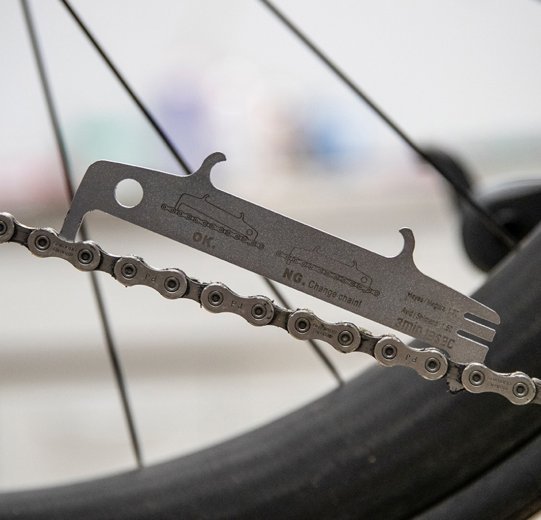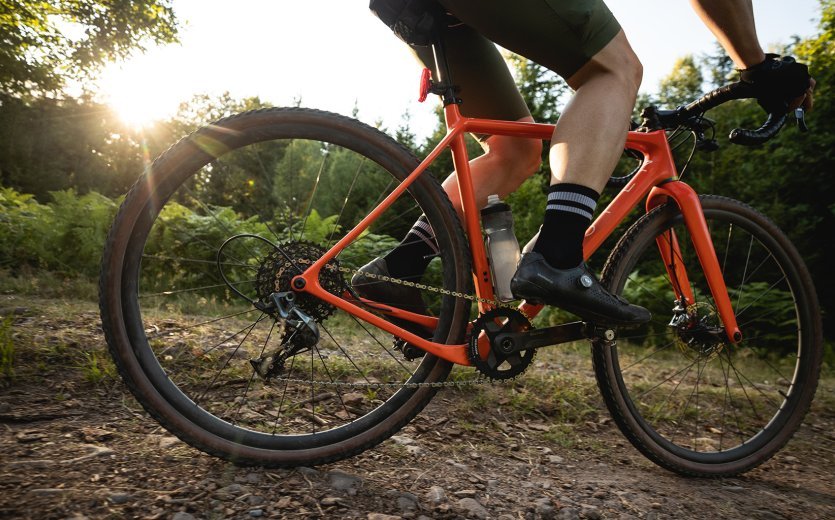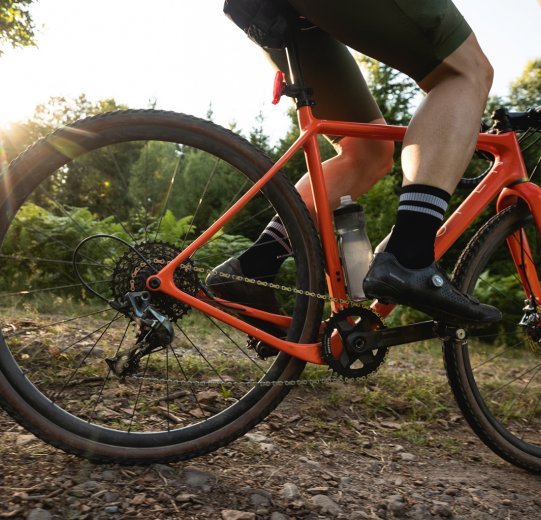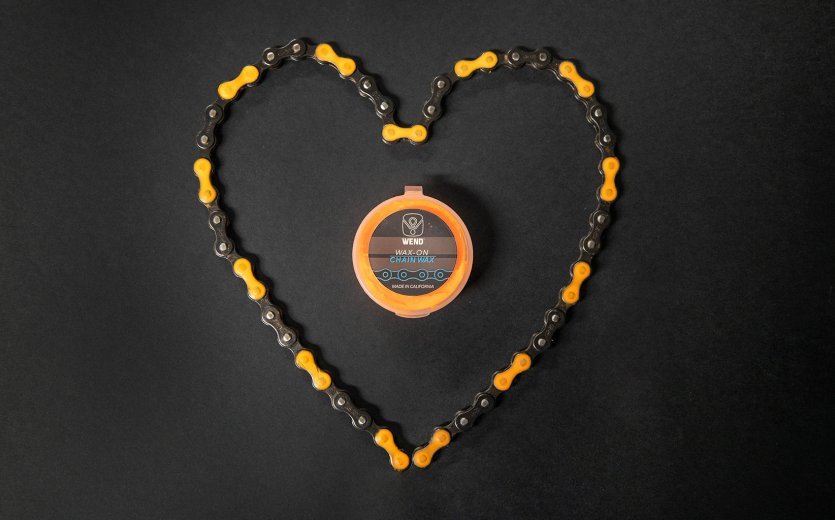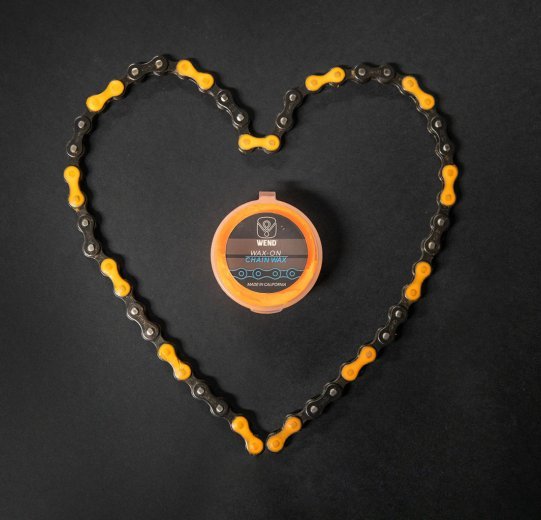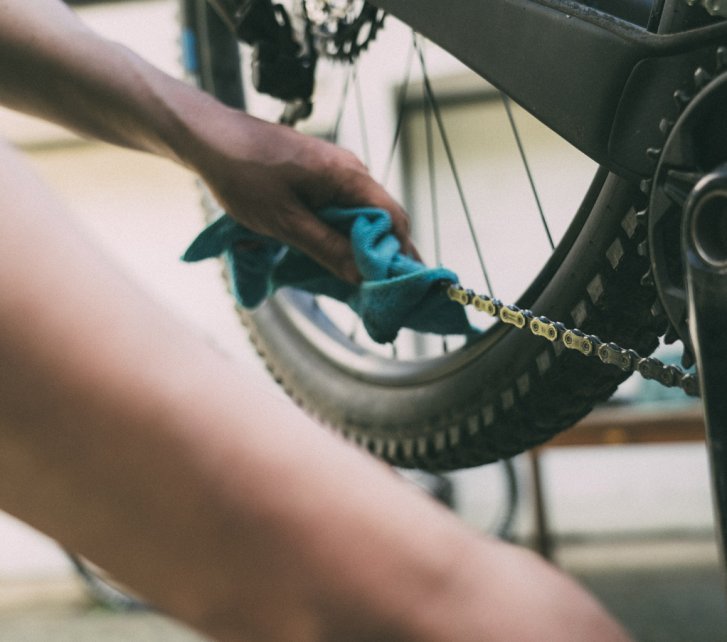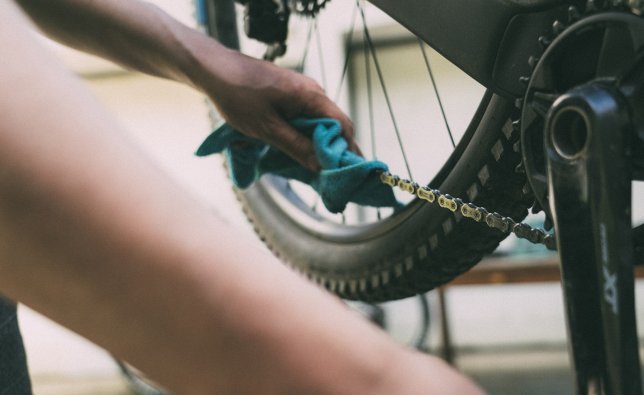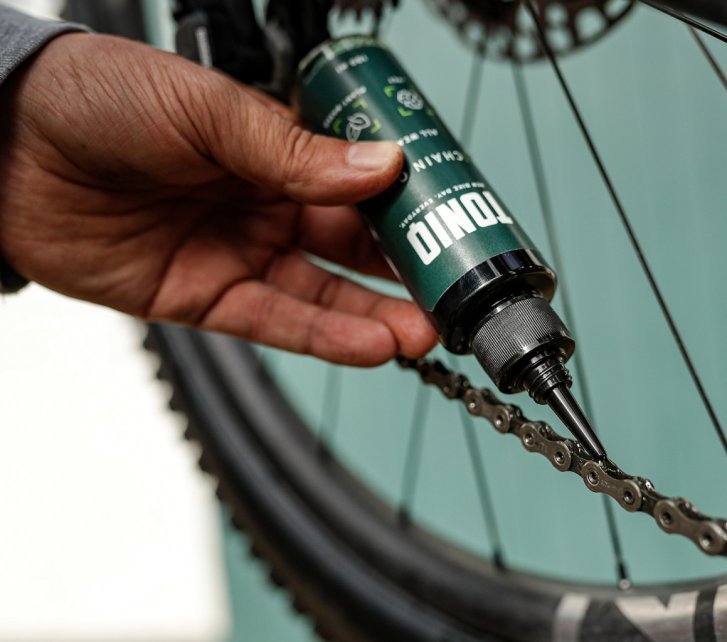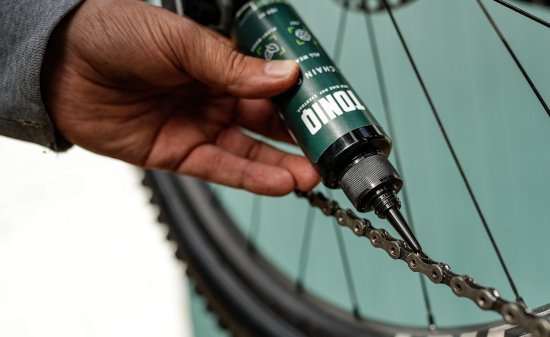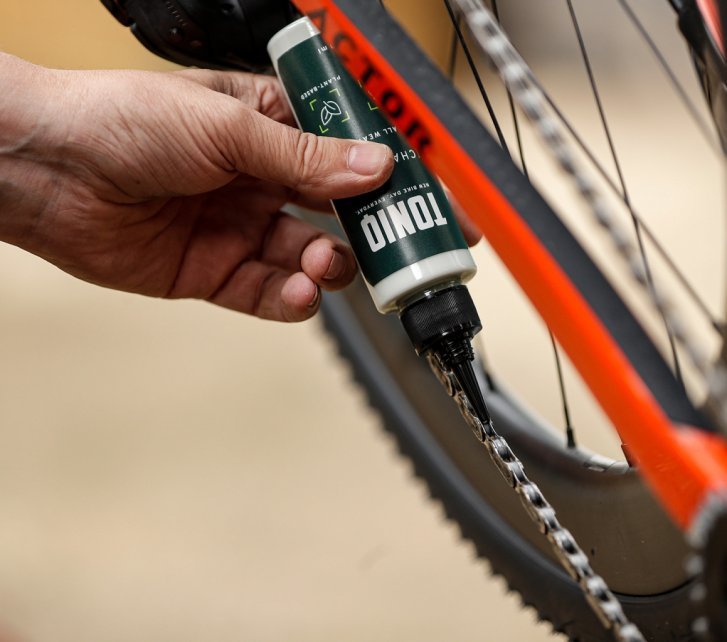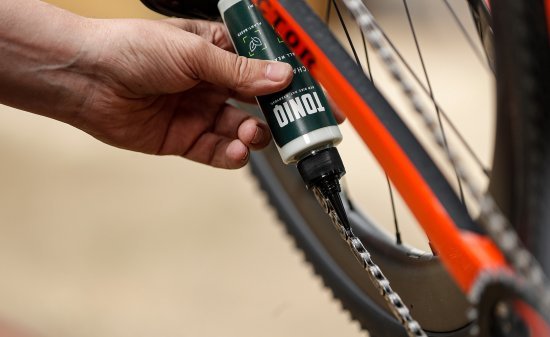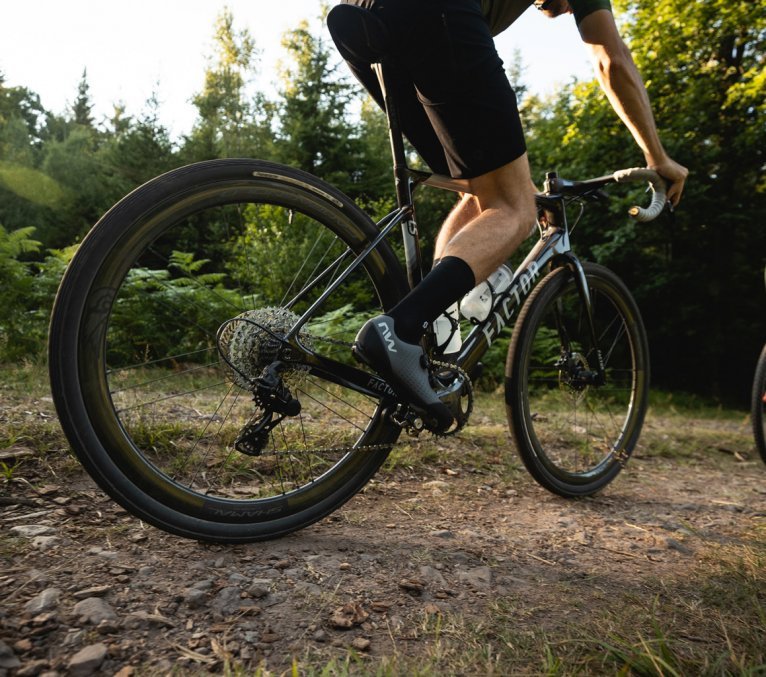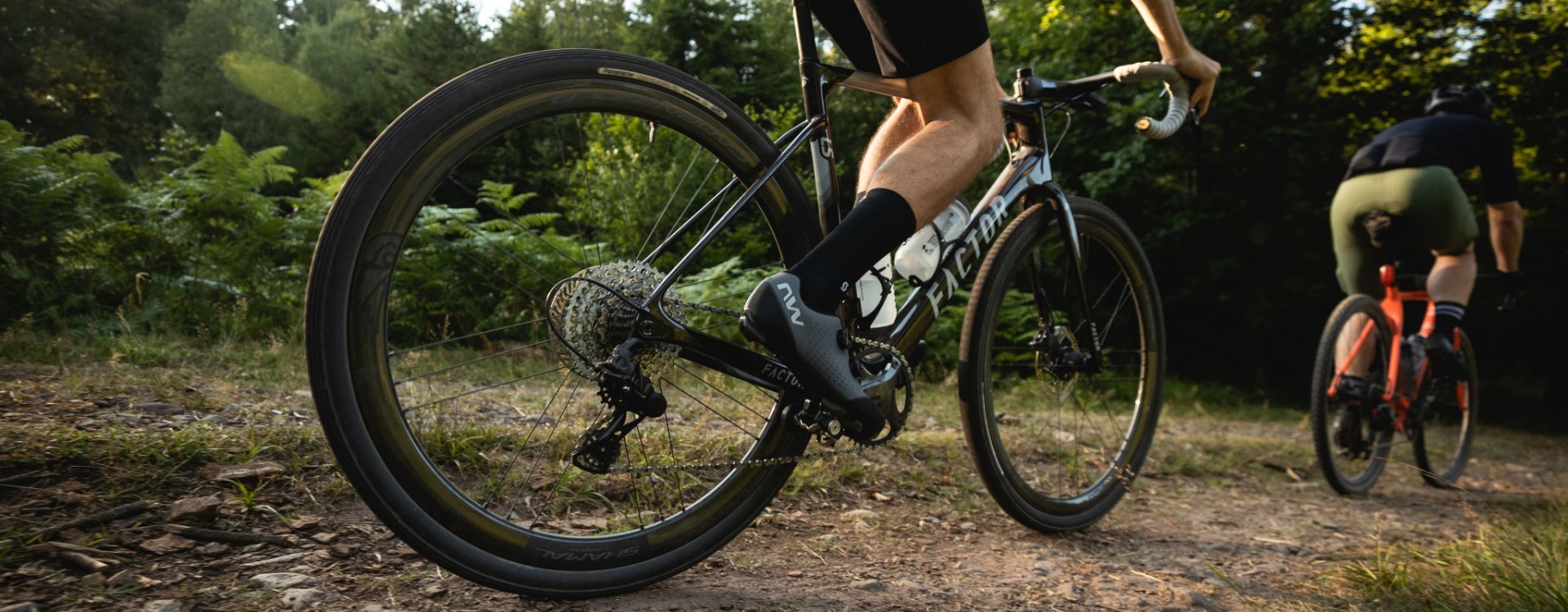Grease, Lubricate and Maintain Your Bike Chain
Well-greased chains are smooth, quiet, and shift with precision. But which lubricant is the best? Here are some tips for proper chain care.
Most people notice that a bike chain should be greased when it starts to squeak. In this condition, the wear is tremendous, power loss is at its maximum, and the drive runs very rough, loud, and the gear shifting becomes inaccurate.
However, many people underestimate the difference, the right lubricant and timely, proper chain-care can make for a bike's function. Depending on the conditions, this can be several thousand kilometres more mileage before your chain is worn out. What sounds like more effort actually saves time in the workshop and money in the long run.
Unless you’re riding with a belt drive, lubricating the chain is a subject that concerns all cyclists: mountain bikers, road cyclists, gravel bikers and regular cyclists. We’ll provide answers to questions regarding why, with what, when and how to properly maintain and lubricate your bike chain.
Why Do I Have to Lubricate My Bike Chain?
Greasing the chain serves three purposes: it reduces frictional resistance in the drivetrain, reduces wear and offers protection against corrosion. Friction and wear are in close relation to one another. Chain wear is often referred to as "elongation", but this does not mean that the chain links themselves become longer. It is the connections of the individual links – the "joints", so to speak – that accrue more play over time, which adds up. This happens through friction and consequently abrasion between the individual parts of the chain – the pins, collars on the inner links and the rollers. You can measure chain wear, but it is also noticeable when the quality of your shifting decreases. A chain that wears out quickly will also accelerate the wear of chainrings and sprockets, and in extreme cases will no longer hold onto them reliably. Lubricating the chain cannot prevent wear entirely, but it can significantly delay it. When it’s well-maintained, your chain will last longer and you’ll ride faster. In addition, properly lubricating a chain can waterproof it, which protects it from corrosion due to moisture as well as from increased friction due to dirt build-up.
Which Type of Chain Lubricant is Best?
The lubricant that’s best for you depends on many factors. For a dusty long-distance tour on a gravel bike, for example, you need a formula with long-lasting lubrication and low dirt adhesion. For a mountain bike ride on a rainy day, lubrication should be as dependable as possible, repel water and protect against corrosion.
What does universal chain oil do?
Chain oils are the classic choice, but, from a modern perspective, certainly not the best one. Many of these oils are universal formulations that work well under all conditions as a good compromise. In the product description, you usually find out what a particular lubricant is optimized for. Most are made from mineral oil, synthetic oil, vegetable oil, or paraffin. Various additives are mixed in to achieve certain properties, such as silicone, PTFE or other polymers, and ceramics. Liquid lubricants come either in small plastic bottles that allow precise dosing or as chain spray.
Sustainability and environmental compatibility are hugely important for bicycle lubricants. While eco-friendly chain oils promise significant biodegradability – the issue starts already in the workshop: By applying it carefully and in the right amount, you use less oil and, accordingly, lose less oil in nature. Also, please note: Widely used penetrating oils like WD-40 or Brunox, although excellent in other areas, are not suitable for chain lubrication because they are too thin and volatile. They rather flush out the chain's remaining lubrication.
What Does Wet Lube, Dry Lube and Chain Wax Do?
If you are not satisfied with a compromise and want to get more out of your drivetrain, you can also use more specialised lubricants for certain applications.
Wet lube, for example, is the category name for chain-oils with a more viscous consistency in order to form a lubricating film that is not so easily washed off by a spray. They also serve as a kind of waterproofing agent for chains and provide excellent protection against corrosion. However, this tough lubricating film is only an advantage when it is wet, as dry dirt adheres to it more easily.
For dry and dusty conditions, dry lube is the better choice. Dry lubes are much thinner when applied due to the presence of solvents. Shortly after exposure, the solvents evaporate and leave a lubricating film that attracts very little dirt. If you do get caught in the rain with dry lube on your chain, however, the lubricating film will wash off faster than that of a wet lube. Dry lubricants are available based on oil or paraffin (wax).
Chain wax is undisputedly the most efficient lubricant for bike chains. Wax creates a dry lubricating film you can touch without getting greasy or dirty hands. Waxed chains stay cleaner and can last many times the mileage of oiled chains. However, chain waxes generally require the chain to be completely degreased before application.
All about the proper waxing of your chain, we reveal in our article "Don't fear chain wax".
Liquid waxes, also casually called Drip-Wax, already combine most benefits of chain wax with an easier application: Cold waxes like Squirt, Silca Super Secret Chain Lube, Flowerpower Wax by Effetto Mariposa or the plant-based Toniq are wax-in-water emulsions that are liquid at room temperature, so they can simply be dripped onto a chain.
Wax in solid form (Hot Wax) generates a very dry, long-lasting lubrication. Such products are especially durable and reduce friction extremely reliably, but also require the greatest effort in their application.
How Do I Care for My Chain Properly?
In short, the process consists of two steps: cleaning and lubricating. Before you begin, we recommend that you perform maintenance on your bike in a place where you don’t mind getting the floor dirty. Alternatively, you can place an oil-resistant pad underneath the drivetrain. Our notes are intended to serve as a general guide. Be sure to also check the application instructions from the manufacturer of your lubricant.
Proper Chain Care - Step 1: Cleaning
The first step is to clean the chain. This is crucial for ensuring that new lubricant can penetrate the chain's links, thereby forming a lubricating film directly on the metal and not mixing with old impurities, which can turn it into a kind of grinding paste. How thoroughly you should do this depends on how dirty your chain is and how much time you can spare. Even briefly cleaning the chain is much better than doing nothing at all. The quickest method is to simply wipe the chain with a clean cloth. To do this, turn the crank backwards and let the lower chain strand slide through the cloth. The chain quickly becomes visibly cleaner and the rag much dirtier. Make sure that your fingers do not accidentally come between the chainring and the chain! If you want to be a bit more thorough or if the chain has stubborn dirt, then you should first treat it with degreaser or chain cleaner and clean it with regular brushes or paintbrushes rather than just a cloth. Special chain cleaning devices partially automate the process. If you want to occasionally give your chain a thorough cleaning, you can remove it and treat it thoroughly with degreaser in a shallow container. When putting the cleaned chain back on, be aware that many master links may only be closed once. You should install a new one if necessary. After wet cleaning, we recommend that you allow the chain to dry before continuing the greasing process. As dirt also accumulates on the derailleur pulleys, chainrings and cassette over time, it is worth giving them some attention occasionally. If you cannot remove stubborn dirt deposits with a rag or a sprocket brush, you can try to scrape them off carefully with a tyre lever or a small flat-head screwdriver.
Clean your chain thoroughly. As a rule, the more often you clean it, the less dirt accumulates. © bc GmbH
Proper Chain Care - Step 2: Lubricating
After cleaning, apply the lubricant. Continue by slowly rotating the crank backwards and apply the oil or drip wax to the chain rollers and transitions between the side links. Take your time to ensure that each chain link gets a drop. If your chain has a chain lock, you can use it as a reference point to ensure you've gone around completely. Spray lubricant is harder to dose than traditional chain oil from a drip bottle. Also, be very cautious as it's easy to accidentally get spray mist on the brake disc or, in the case of rim brakes, on the braking surface, effectively disabling the brake.
This poses a risk of serious accidents with severe consequences!
After you’ve fully lubricated the chain, it’s wise to let it run through the drivetrain for a few rotations by turning the crank. This allows the lubricant to penetrate even better through the rotation of the chain rollers. Now, wait a few minutes for the lubrication to settle in, and then thoroughly wipe off the outside of the chain. This removes excess oil, which would otherwise only collect dirt on the outside of the chain. When wiping, we recommend grasping the cloth firmly around the chain, similar to when you’re cleaning it, while you turn the crank backwards. This reliably removes the excess oil. The chain can look quite dry afterwards – the lubricant is now where it’s needed – inside the rollers and between the links.
Treating your chain with wax (hot wax) is a bit more involved. You melt the wax in a pot, bathe the detached chain in it and then hang it up to cool down. What's left is a dry layer of wax on and especially inside the chain. In our blog article "Don't fear chain wax", we'll explain in detail how you can easily get to your first self-waxed bicycle chain.
If you apply the oil or wax drop by drop to the individual chain links, you will not only have the best lubrication results, but also... © bc GmbH
...you’ll save a lot on lubricant. This is good for your wallet as well as the environment. © bc GmbH
When and How Often Do I Have to Maintain My Chain?
In general, we recommend that you perform maintenance on your chain after every ride. As everyone knows: after the tour is before the tour. This gives the lubricant enough time to creep into all the gaps in the chain before the next ride and solvents can evaporate. If you don't have time right after a ride, the evening before the next ride is also a good time for chain maintenance. If you have only gone for a short after-work ride in dry but not dusty conditions, one application of grease is often sufficient for a second round. When in doubt, it helps to listen carefully to noise coming from the chain. If it runs quietly and smoothly over the chainring and sprocket, then it is well-greased. If you hear a slight metallic rattling sound or even squeaking, it is due for maintenance. If your chain is crunching after a muddy mountain bike ride, you should pay extra attention to it: Oil and dirt can form a grinding paste that migrates into the inside of your chain and significantly accelerates wear. In the end, whether you should re-grease for every ride depends heavily on the following questions:
- What kind of conditions do you ride under?
- How much distance do you cover per day?
- What lubricant do you use and how carefully do you apply it?
Over time, you'll develop a feel for how long a lubrication lasts for you. For a multi-day tour, your choice of lubricant and a piece of cloth should be in your baggage. This way, you can re-lubricate in a timely manner if needed.
With our tips, you'll be running smoothly again! If you have any questions about lubrication, feel free to reach out to our Service Team.

